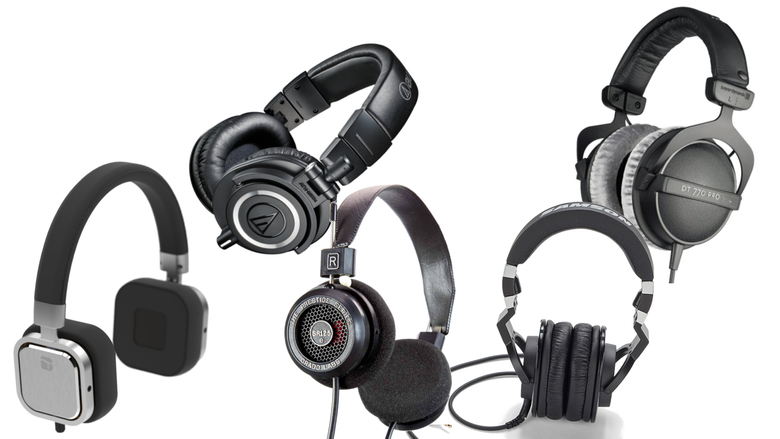
Headphones serve a surprising number of different purposes. For most, they are just a way to enjoy more detailed and accurate listening without having to fill the room with sound. For others, however, headphones are an analytical tool. Cans of a certain quality can be used to study the mix of a track (like studio monitors) or even dissect the arrangement of instruments in a room recording. Here are our picks for the best reference headphones.

|
Amazon Customer Reviews
|
Price: $309.00 Shop at Amazon | Shop now Read our review |
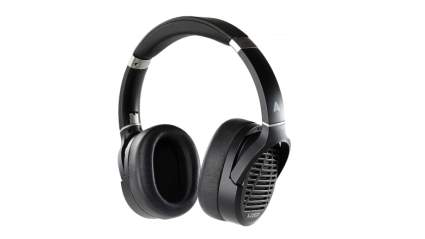
|
Amazon Customer Reviews
|
Price: $399.00 Shop at Amazon | Shop now Read our review |
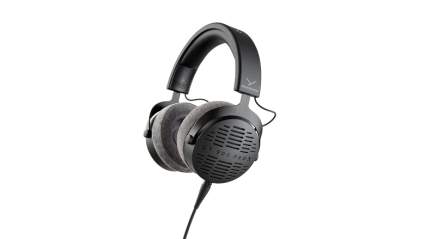
|
Amazon Customer Reviews
|
Price: $234.00 Shop at Amazon | Shop now Read our review |
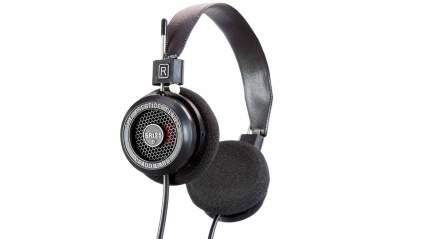
|
Amazon Customer Reviews
|
Price: $225.00 Shop at Amazon | Shop now Read our review |
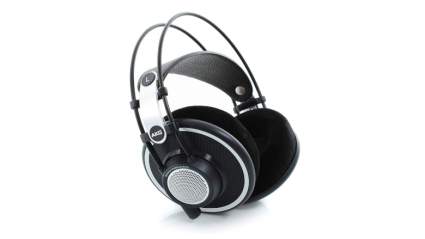
|
Amazon Customer Reviews
|
Price: $144.50 Shop at Amazon | Shop now Read our review |
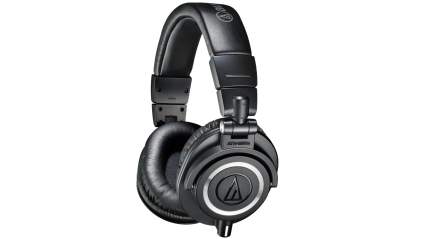
|
Amazon Customer Reviews
|
Price: $169.00 Shop at Amazon | Shop now Read our review |

|
Amazon Customer Reviews
|
Price: $69.77 Shop at Amazon | Shop now Read our review |

|
Amazon Customer Reviews
|
Price: $249.99 Shop at Amazon | Shop now Read our review |
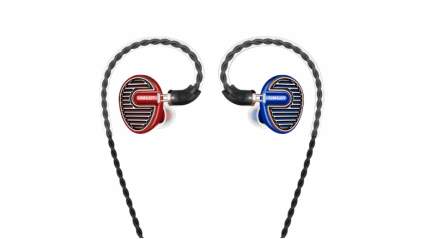
|
Amazon Customer Reviews
|
Price: $145.99 Shop at Amazon | Shop now Read our review |

|
Amazon Customer Reviews
|
Price: $149.00 Shop at Amazon | Shop now Read our review |
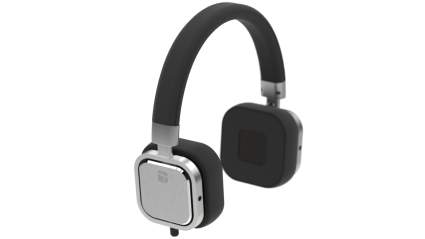
|
Amazon Customer Reviews
|
Price: $38.90 Shop at Amazon | Shop now Read our review |
-
1. EDITOR’S CHOICE: Sennheiser HD 650
Pros:- Balanced and natural sound
- Wide dynamic range
- Lifelike spatial imaging
Cons:- Open-ear design does not contain the sound
- Headband can be a little tight
- Requires a capable amplifier to drive
The Sennheiser HD 650s have an open-back design, offering more natural sounding audio at the expense of listening privacy.
Sennheiser is a top audio company that produces numerous high-end headphone lines in a variety of price ranges. While the Sennheiser signature sound is great across price points, their midrange open back Sennheiser HD 650s are a particularly great value.
These fairly large headphones have an elegant titanium-silver finish that is further complemented by solid build material and a weighty feel. The headband can be a little tight for some, but the plush velour ear cups make them plenty comfortable. The HD 650s include a detachable cable with a 1/4-inch connector, but can easily be converted to fit media devices with a 1/8-inch adapter.
The back of its drivers are exposed to the open air, which means headphone audio leaks out and environmental sounds leak in. But in a quiet listening environment, open-back headphones like the HD 650 deliver unparalleled dynamic playback that makes it all worth it.
These cans also excel at spatial imaging, staging you within the recording to the point where you can tell where individual instruments are within the room. With its wide frequency range of 10 – 39,500 Hz, the lowest lows and highest highs are crisply preserved in playback.
In terms of frequency response, the HD 650 delivers neutral and balanced sound. The bass doesn’t boom. It is driven with a warm precision, and the treble is crystal clear. The midrange is the stable center that balances it all, sandwiched perfectly between the low and high bands with astonishing accuracy.
For the incredible level of detail that these headphones deliver, they have a relatively high impedance rating of 300 Ω. This means that these headphones will require a capable amplifier to power their sound. I have covered amp/DAC combos before so maybe consider one of those if you also want to improve the audio transcoding capability of your PC.
Though adding one to your setup is always a nice touch, it is not a must-have for good portable sound. In any case, the Sennheiser HD 598, which offers a competitive edge against the HD 650 at half its price, is equally hard to drive.
If you need to factor in the price of an amp into your budget, go for the HD 598 and get a nice amp to match, but if you have a quality amp or the budget for one, the HD 650s are an absolutely wonderful pair of headphones.
-
2. Audeze LCD-1 Audiophile Headphones
Pros:- Ultra low distortion from planar magnetic drivers
- Wide dynamic range
- Lifelike spatial imaging
Cons:- Bulky design
- Headband can be a little tight
- Open-ear design does not contain the sound
Though Audeze produces some of the most high-end planar magnetic headphones on the market, their high-end headphones can cost more than renting 40 hours of professional studio time. That’s why I have no qualms in saying that their entry-level Audeze LCD-1 headphones are more than accurate enough to serve as a reference tool for home recording artists.
The standout technology that sets the LCD-1s apart from the competition is its 90mm planar magnetic drivers. Compared to moving-coil drivers, planar magnetic drivers have a lower distortion factor as well as a more accurate transient response, which really helps bring out both low-end sound and short-lived peaks like snare hits. This is aptly demonstrated by the LCD-1s buttery smooth sound.
The Audeze LCD-1s provide an overall balanced sound signature without making the audio feel flat or lifeless. The low-end delivers a full and present thump without bleeding into the midrange. It won’t pack the same punch as closed-back headphones like the Audio-Technica ATH-M50x, but this is a good thing in the studio context. Vocals and other mid-range instruments sit neatly in the mix, which really showcases the superior sound staging capabilities of these cans. The treble output of these headphones is a true high point (pun intended) for the sound, as the amount of detail you get in the twang of a guitar string or the snap of a rim shot really brings the audio to life. That said, a slight bump in the 3-4KHz frequency range does colorize the sound some, but not enough to shake our faith in the sonic accuracy of these headphones.
So what’s left to dislike about a pair of headphones that checks this many boxes? Not much. By nature, planar magnetic headphones are heavier and bulkier than moving-coil headphones, and so they aren’t the most comfortable pair of cans I own. The clamping force of the headband was also a bit much for me out of the box, too, but the sample unit I received has become notably more comfortable after repeated use. The open-back design might make them hard to use to monitor live recordings too but they are still a top choice for mixing.
These would also make a great luxury gift for a guy who still appreciates the higher sound quality of wired headphones. You can just about guarantee they’ll beat his current pair.
-
3. Beyerdynamic DT 900 Pro X
Pros:- Detailed high-end
- Comfortable velour earcups
- Lifelike soundstage
Cons:- Somewhat harsh treble
- Mini-XLR cable connector
- Bulky design
Though German company Beyerdynamic is best known for its high-end reference headphones, the DT 900 Pro X offers some insane price value and a mild case of middle-child syndrome. But despite being neither the cheapest nor the most powerful, the DT 900 Pro Xs are definitely some of the best reference headphones in the prosumer price range.
The two main reasons you’ll love these headphones are the incredibly detailed sound and the comfort. I own dozens of headphones from top brands like Grado, Beyerdynamic, Audeze, Audio-Technica, and more, and so far none can match the comfort level of the DT 900 ProX’s deep velour earcups. The headband is well-padded too and durable to match. And while I’m talking about build quality, these cans have a lockable disconnecting audio cable, which is always nice to see. Unfortunately, it is somewhat thin and uses the uncommon Mini-XLR connection. They are a little on the heavy side too, and they aren’t particularly portable since they don’t fold.
Ok, let’s get onto the sound. But before I go too in-depth, I should note that these headphones are the open-back version of the DT 700 Pro Xs, which has the same STELLAR.45 driver array and build quality, albeit with a closed-back design. Personally, I prefer the more natural and spacious sound provided by the DT 900 Pro Xs, even though the closed-back version offers more bass and is more practical in the recording booth. I suggest you try both and see which one you like best.
That said, the soundstaging is the first detail that really popped for me in the DT 900 Pro Xs, and that owes some credit to the open-back design. Stereo recordings feel spacious and natural, giving a well-mixed track like Silent Hill by Kendrick Lamar and featuring Kodak Black plenty of room to breathe.
As for the sound itself, the defining feature is the sheer level of detail at the high end. These headphones are known for a slight emphasis on the treble, but this lends well to the tasks of monitoring, mixing, and mastering since you can better hear harmonics and other hairy sounds.
The bass and mids are balanced and smooth. In fact, the frequency response is pretty much flat all the way up to the 1 kHz mark. And flat isn’t a bad thing. That means it is more faithful to the reference material. Sure, tracks with a nice bass bump are more fun to listen to, but they don’t quite fit the bill for studio work. (That said, the DT 700 Pro Xs have that bass bump and still work great for audio referencing).
All in all, Beyerdynamic has done something special with the DT 900 Pro Xs. They approach the absolute perfection that is the DT 1990 for a more agreeable cost without compromising on either comfort or performance.
-
4. Grado Prestige Series SR225x Headphones
Pros:- Open, spacious sound
- Durable UHPLC wire
- Accurate frequency response
Cons:- Ear pads aren’t particularly comfortable
- Open-ear design does not contain the sound
- Offers no outside sound isolation
The Brooklyn-made Grado Prestige Series SR225x Headphones offer some of the best value in midrange headphones, offering a light and powerful design at a fair price. Their open-ear designs opt for a more open and natural sound, but this will come at the cost of sound leakage that can be heard as far as 10 feet away.
If you are looking for headphones to use in a room with a live microphone, this will be your last pick, but if you just want a pure and spacious sound, this is a great option.
While the vintage style of Grado’s Prestige Series is unquestionable, the ergonomics of the headphone are an issue of contention among owners. The flat headband lacks cushioning, and the Y-shaped cable connector can tangle more easily.
In their defense, Grado builds their headphones with UHPLC (Ultra-high purity, long crystal) copper voice coil wire, which delivers an incredibly clean signal to the transistors. The open cell foam over-ear pads are breathable but aren’t the most comfortable for all ear types either.
One of the great benefits of Grado headphones, however, is that they are heavily customizable, and these ear pads can be easily swapped out with aftermarket models like these. Some owners have even reported that soaking the pads in fabric softener will make them more wearable, and for most, all you need to do is wear them in.
Moving finally to the sound, the benefits of the open back design ring through clearly, greatly enhancing the headphones’ spatial imaging. Each recording has an incredible sense of space, and the frequency spectrum on even the densest tracks feels wide open despite having a modest technical range of 20 – 20,000 Hz. Highs and lows are open and ultra-smooth, and leave plenty of room in the middle band for Grado’s signature midrange warmth.
This gives vocals and lead instruments an extra bit of weight and richness, without cutting into the 125e’s clean bass sound. Listening to music on these headphones reveals a new sense of space in your favorite songs, as well as a tonal accuracy that matches hearing a sound in person. Even the most discerning ears would be hard-pressed to notice any harmonic distortion.
Fans of vocally-driven music and instrumentally-driven music alike will love the Grado signature sound, be it on the 225x, or Grado’s flagship Reference Series RS1 headphones, which takes Grado’s sound philosophy to true audiophile level performance.
That said, the SR225x offers great bang for your buck against theR RS1’s and will satisfy all but the most refined aficionados.
Find more Grado Prestige Series SR225x Headphones information and reviews here.
-
5. AKG 702 Reference-Class Headphones
Pros:- Comfortable and ergonomic design
- Present and spacious treble
- Realistic spatial imaging
Cons:- Harder to drive
- Somewhat lacking in bass
- Long burn-in time
The AKG 702 Headphones are known for offering faithful audio at low prices, which is why our hunt for their best affordable audiophile headphones led us right to the high end of their QJ signature sound series.
Comfort is a key element to these headphones, as they are designed for the dedicated listener who will spend hours at a time on focused listening. The AKG 702 has deep velvet “3D-form ear pads” that are ergonomically shaped and angled for a comfortable, direct fit. These large pads sit cushioned beneath two lightweight yet sturdy metal arches that guide the cloth headband.
These headphones use high-quality materials for all elements of their design, inside and out. Internally, these headphones utilize special flat-wire voice coils that create a spacious, dramatic soundstage.
AKG also boasts a custom Varimotion two-layer diaphragm, which allows separate production of high and low-frequency sound. The ALG 702’s ported design also lends many characteristics to the cans’ spacious sound, and the wide soundstage was among the first details to hit me when listening. This is not the defining feature of the AKG 702, though, as the actual presence of the sound is what really jumps out at first listen.
Recordings have plenty of spread, as the Q 701s have a frequency range of 10 – 39,800 Hz. The highs are huge, airy, and three-dimensional, with the high-mids embellished by a bit of natural brightness. The bass response is tight and doesn’t feel colored or imbalanced. The lack of natural warmth to these headphones means that kick drums and bass lines carry less authority but still sit nicely alongside lead guitar lines and snare hits. Ultimately, the sound on these headphones smooths out quite a bit with time.
After a fairly long burn-in period, the sounds will mellow out and become less bright in the high-end, but finding most people’s sweet spot can take longer than other headphones.
If you are looking for an incredibly comfortable pair of headphones for home mixing and mastering, the AKG 702s is a solid choice for the price. Your max volume might be on the lower side without an amplifier, but these cans are driven well enough by phones, mp3 players, and other common sources.
Find more AKG 702 Reference-Class Headphones information and reviews here.
-
6. Audio-Technica ATH-M50x
Pros:- Flat, accurate sound
- Durable folding design
- Low price tag
Cons:- Not comfortable for long-term wearing
- Somewhat heavy headset
- 3.5 mm cable is semi-proprietary
The ATH-M50x is the most popular model of Audio-Technica’s M-Series headphones, offering a true studio monitor sound at a fairly reasonable price. The M50xs offer both durability and comfort in its design, with a mix of soft padding and rugged plastics making up its compact design. The ear cups fold, rotate, and swivel 180°, making this a highly portable option that works great for DJing. In many respects, they draw comparison the Samson Z55s.
Because the headphones are on the heavier side, they can grow uncomfortable to wear after an hour or two. The locking 3.5mm cable is a nice touch not found on the original M50, but because of the unique design of the locking cable, it makes the connection semi-proprietary. But despite these ergonomic shortcomings, the M50x delivers a powerful sound with its large 45 mm drivers.
These headphones have a wide frequency range of 15 – 28,000 Hz, backed up by accurate frequency response. The sound signature of these headphones is flat, maintaining an accuracy of sound that allows you to hear the song as the producer intended.
The M50xs are still fun to listen to, as the monitor-style sound breathes life into high-quality recordings, demonstrating the full effect of different mixing styles. The soundstage does suffer some from the tightly sealed design, but ultimately, the M50x delivers a great sound with fantastic bang for your buck.
Find more Audio-Technica ATH-M50x information and reviews here.
-
7. Samson Z55 Professional Reference Headphones
Pros:- Crisp and clear sound
- Comfortable for long-term wearing
- Durable folding design
Cons:- Made with low quality plastic
- Needs a more neutral sound for actual mixing
- Somewhat muddied low end
Samson got their start in headphones back in 1980, when they aimed to bridge the gap between musicians and their audience with a high-quality pair of studio headphones that is affordable to everyone. Fast forward to today, and their flagship Z55 Headphones still remain as a top of the line pick for an affordable pair of studio reference headphones.
Their sturdy folding design is made from a mix of metal and plastic materials. The plastic could be of slightly higher quality, but this gripe is easily forgiven since all you notice while wearing them is the luxurious lambskin cushioning.
The lambskin ear cups can flip around and swivel 90°, as well as fold in for storage, making this a durable and flexible pair of headphones. The headphones are snug without putting too much pressure on your head and are easy to listen to for hours on end.
These headphones also come with several locking 3.5 mm cables, including an extra-long coiled cable, and one with an inline mic and call/answer controls for mobile listening. The box also includes a 1/4-inch adapter and carrying pouch.
In the sound department, the Z55 stands apart from other brands at its price range with a tonally balanced sound that is as good for listening as it is for “studiophile” music monitoring. The overall frequency response across their range of 10 – 25,000 Hz is fair, giving fair emphasis to both bass and treble sounds.
The low-end feels just a bit confined by the closed-back design but gets a small boost in the lower-mid frequencies. Mids are clear and accurate, as is the high-end, which earns an extra crisp boost from the Z55’s large 45 mm drivers.
Stereo sound staging is quite accurate on these headphones, and while you might not be able to pin down the exact location of each instrument in a mix, the soundstage is wide enough to reveal the nuances and dynamics of a high-quality mixdown.
Listeners hoping for a warmer and more natural sound might be interested in the slightly cheaper Samson Z45 Professional Studio Headphones, but otherwise, the Samson Z55s offer a quality sound with little downside.
Find more Samson Z55 Professional Reference Headphones information and reviews here.
-
8. V-MODA Crossfade M-100
Pros:- Durable and comfortable
- Precise and deep bass that doesn’t muddy sound
- Fashionable design offers custom laser-etched shields
Cons:- Treble is somewhat rolled off at high-end
- High price tag
- Not comfortable to wear around your neck
The V-MODA Crossfade M-100 headphones have an incredible 2-year warranty backed by their 50% off immortal life program. That means the company offers a discount of half off any new pair if yours is damaged outside of warranty. Still, if it is a purely neutral sound you are after, the M-100s will not be the first choice.
V-MODA is a company that originally aimed to merge the worlds of fashion and audio technology, but in doing so with true conviction, ended up crafting one of the most highly-rated pieces of consumer audio equipment. The M-100s catch the eye at first glance, with a striking design that merges a sort of industrial ruggedness with a mind to fashion.
If bought from the V-MODA site directly, the shields on the side can be ordered with a custom laser-printed design, or even replaced with a custom design on your choice of precious metals, which please those who love to customize their gear.
The Steelflex headband is durable and quite flexible, but the earphones don’t rotate, so wearing them around your neck can be uncomfortable. Wearing them over your ears, however, is a treat, as the headband offers the right amount of cushioning and clamping force for a comfortable fit. These headphones have Cliqfold hinges and an exoskeleton-style hardshell case so they are easy to tote around as well.
The stock earpads on the M-100 are quite comfortable but a bit shallow, so many owners recommend swapping these for the V-MODA’s XL memory cushion pads, which offer better comfort and an improved seal.
In terms of audio, the M-100 defines V-MODA’s signature M-Class “Modern Audiophile” sound, which is more interested in sounding good than sounding accurate. Ultimately, these headphones are not for the studio (not neutral enough), but their frequency response is fine-tuned, and their 50mm Dual-Diaphragm Drivers give a lot of separation between bass and mids to highs. On the low end, this effect gives precise and deep bass, without muddying the tight mids.
The ported design adds to the bass extension, but the highs still sound somewhat rolled off, which makes the sound feel a little more closed in. Hi-hats and alto vocals still come in sharp, but not with the same drive as chunky bass riffs and sawtooth subs.
But with a technical frequency range of 5 – 30,000 Hz, the sound spectrum is still well-represented on these cans, with the double drivers going a long way to keeping the sound balanced and fun. Sound staging is good, but not a strong point in the sound.
As a headphone whose design is the result of heavy collaboration, the V-MODA does a lot of things that will please the majority of listeners out there. While the end result is a bit pricey, the incredible sound and build quality will please most.
Find more V-MODA Crossfade M-100 information and reviews here.
-
9. Simgot EN700 Pro In-Ear Monitor Headphones
Pros:- Wide frequency range
- Clear and accurate sound
- Stylish and durable
Cons:- Aux port housing is too large
- Slightly warm mids
- In-ear headphones cause listener fatigue more easily
Though many prefer the comfort of over-ear ear headphones for extended listening, there are some distinct advantages to using in-ear monitors (IEMs). Specifically, IEMs aren’t as clumsy to wear in public and can deliver high-fidelity sound at a competitive price point to over-ear headphones.
The Simgot EN700 Pros are exemplary of these features, as they deliver both sound and style at an appealing entry-level price. Some distinct visual features left me with a positive first impression of the sample unit I reviewed. The earbuds are made from Series 7 aviation aluminum and connect to silver-plated braided wires.
The headphones feel durable and of high build quality, although they suffer from one small design oversight. The aluminum housing around the aux port is too bulky to fit through the holes on most of my phone and iPod cases.
The EN700s come in a nifty leather carry case and have two different styles of ear tips in three sizes each. This is very helpful because a proper seal is essential to getting a clear and accurate sound out of IEMs.
The two types of ear tips include a set that focuses on clear mids and highs while the second set focuses on enhanced bass. When I did my listening test, I used the mids-emphasized ear tips but it should be noted that the other pair only slightly colorize the sound of your music.
For the most part, these earbuds have a clear and balanced sound that is faithful to the little details that you love about your favorite songs. The low end is detailed without being overpowering. The EN700s have a wide frequency range of 15Hz – 40kHz, so low-end sounds have plenty of room to breathe.
The mids are on the warmer side, but otherwise, provide a natural place for vocals and keys to flourish. The highs are clear but might feel just a bit subdued compared to over-ear headphones of comparable quality. These headphones’ 10 mm drivers reach an absolutely absurd volume, and like most high-end headphones, should not be pushed to their limit for the safety of your hearing. Conversely, they are able to deliver an impressive level of detail even at their lowest volume.
Ultimately, there isn’t a clear winner between in-ear and over-ear ergonomics in the world of reference headphones. If you are mixing audio, it is a good idea to listen through as many different kinds of cans as possible (including monitors too). If you don’t mind the added discomfort of silicone ear tips, the Simgot EN700s make for a solid pair of value-conscious daily drivers.
Find more Simgot EN700 Pro In-Ear Monitor Headphones information and reviews here.
-
10. Shure SRH840 Professional Monitoring Headphones
Pros:- Clear and sparkly sound signature
- Breathable design
- Good soundstaging for a closed-back design
Cons:- Heavy design and firm headband can cause discomfort
- Design quirks hurt the cans’ aesthetic
- Bass somewhat lacks presence
Shure has a longstanding reputation with professional audio engineers because of their precision and consistency. The “prosumer” class of listeners can enjoy Shure’s studio series sound as well, with the ever-popular Sure SRH840 Headphones leading the studio series in balancing performance and affordability.
The SRH840’s closed-back circumaural design lends to its extra heft, and the collapsible headband firmly clamps the large ear cups to your head. Suffice to say they aren’t the most comfortable headphones around, but the ear cups and headband do have fantastic padding for short-term listening.
The ear cups twist swivel 180°, making them great for DJing, and their plush material provides a great sound seal without suffocating your ears. The SRH-840s also come with an extra pair of stock pads, which makes them huge in the headphone modding community.
One downside of the overall design is that a thin cable runs between each can and actually sits exposed where the headband can expand, which means you need to take an extra degree of care when handling these headphones. The other cables included are solid though, especially the detachable locking 3 m coiled cord.
In the sound department, the SRH840’s 40mm neodymium drivers deliver a naturally warm sound that works equally well with all genres of music. Despite a fairly average frequency range of 5 – 25,000 Hz, the frequency response offers great extension in the bass and treble. Slightly emphasized mids provide Shure’s signature warmth and leave plenty of room for the high-end to sparkle.
At first listen, these headphones will seem more on the bright side, but a moderate amount of burn-in will reveal a more enjoyable and balanced sound.
High-quality recordings will give each instrument plenty of room to breathe on the sound spectrum, and in terms of L-R balance, Shure offers surprisingly good sound imaging for a closed-back headphone.
Find more Shure SRH840 Professional Monitoring Headphones information and reviews here.
-
11. T402v by Torque Audio
Pros:- Custom EQ built into modular earcups and earpads
- Durable design
- Fantastic bass response across all sound settings
Cons:- Sturdy design and firm headband can cause discomfort
- Midrange somewhat recessed
- High price tag
The key innovation behind the Torque t402v headphones is a modular design that aims to please any listener. Torque is an up and coming audio company that brings innovation with a purpose. The t402v comes with one pair of on-ear pads and one of around-ear cups, both of which are magnetic and can be swapped out on the fly. These plush SoftRide memory foam cushions can also be configured to modify the frequency response for more or less low-end sound.
To be more specific, the headphones are using what Torque calls Passive Acoustic Valve Technology™ (PAVT), which uses subtractive equalization to physically cut specific frequency ranges to boost others. Simply put, the headphones have different perforated filters that you switch between, and they physically augment the low-end of the sound waves.
The mofi:fi modular sound is the end result of this, and it provides four color-coded options for different levels of bass to complement the gentle U-curve of the t402v’s frequency response graph. Across all different bass response levels, highs are crisp, and the soundstaging is fairly dynamic with a semi-open back design. The different levels of low-end each characterize the audio differently, and I will cover each one individually below.
Yellow: Skull rattling bass. This setting brings 808 kicks and cello to life, but it is also where the mids are the most recessed. Sometimes vocals will be muddled, but this is overall an incredible fun listening experience.
Blue: This setting is where the bass is just starting to rumble while the mids and highs are still smooth.
Red: My personal favorite setting is very close to the blue setting but just slightly more balanced. Low-mids have presence and highs stay crisp.
Black: The most balanced sound, which I must emphasize, still has great bass extension for listening to electronic music and hip-hop. A note to those still focused on reference use. This is the only mode you want to mix your audio with unless you want to fool yourself into thinking you’ve mixed your bass in just right. (Spoiler alert: you didn’t).My testing for the over-ear listening matches this description as well. The smaller pads do make the sound feel a little less open, though, plus their design contributes to external sound leakage. Both pairs of ear cushions are incredibly comfortable, and the SoftRide memory foam always returns to form, no matter how much you tweak the fit.
Even on my larger head, I find the square ear cups engulf the side of my head, but if you ever find this uncomfortable, you can easily switch to the comfortable on-ear pads without forgoing too much audio quality.
The machined metal parts are incredibly durable and have nice brushed aluminum accents, but the spring steel reinforced headband is not well cushioned and causes me discomfort during extended listening. The ear cups swivel 95° and have just enough vertical articulation to wear them around your neck.
Obviously, Torque has put great thought into their innovative headphone design, but to say that it will please anyone is not an entirely true statement. These cans are obviously not for studio use, as they color the music in a way that would muddle a mixing effort. And more importantly, their high price is an obstacle that limits their appeal to a casual listener.
Torque’s flagship t096z in-ear headphones hope to attract an even wider audience with their portability and sound-shaping selection of silicone ear tips, but they too are quite expensive. Still, this adds credibility to the company’s mission, as they have created a new line of audio gear that is competitive with industry giants in terms of audiophile-grade sound.
For an avid listener who only wants to own one pair of headphones, the t402vs offer immense value, providing craftsmanship across the board. This goes right down to its detachable 1.4 m cable shielded in mylar, which also has an inline mic and controls for iOS. If you enjoy toying with your sound beyond fiddling with generic digital EQ, these headphones are a top pick.
Find more T402v by Torque Audio information and reviews here.
All About Reference-Grade Audio
Reference headphones across all price points represent the top tier of audiophile-grade listening. They are generally designed to deliver the flattest and most accurate sound so that the cans don't discolor the audio from the way it was originally designed to sound.
So while there are certain pairs of headphones that are more "fun" to listen to because of a nice bass bump or a cool signal processing effect, these bad boys are exactly what one would need for a focused listening session.
Now, some may (rightfully) balk at me calling a pair of $200 reference-grade when studio gear is usually much more sophisticated. But let me put it this way: if I didn't set a price cap somewhere, I could be reviewing headphones that cost as much as a car. And if I can't afford that, it's probably fair to say neither can other working stiffs.
And on top of that, they won't even be portable for working out, or wireless for mobile use. Regardless of that, the sound-first headsets that we selected are the best choices for those who want a pristine, focused listening experience.